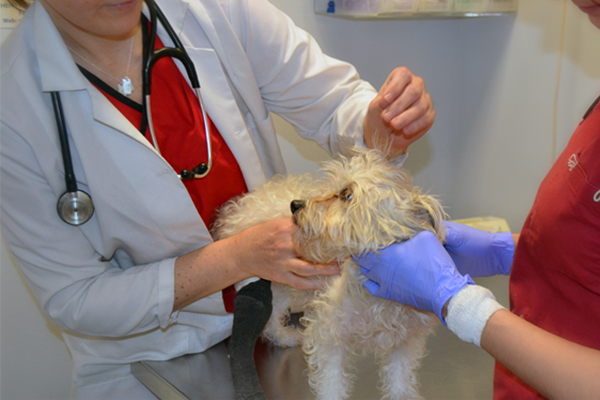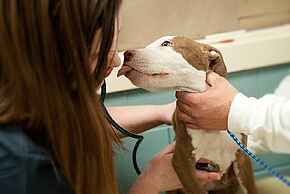At its simplest definition, No Kill shelters and No Kill communities save all healthy and treatable pets. But it can be challenging to understand how individual shelters put this concept into practice.
Defining No Kill Shelters
A typical rule of thumb is to determine whether a shelter saves more than 90% of its animals. That is its Save Rate. The Save Rate takes all Live Animals that are in a shelter in one year (those adopted, transferred to No Kill shelters/rescue groups, reclaimed by their families or still at the shelter) and divides it by Total Animals that have been in the shelter that year (all pets in the shelter’s custody at the beginning of the year and all live intakes during the year, including those considered “owner requested euthanasia.”)
Today, many leaders are raising the bar and stating that the real No Kill Save Rate should be 95%. Most important is saving every pet that is healthy and treatable.
Confusing Terms
Be careful of the word “adoptable”. Many poor performing shelters will claim that they are saving all “adoptable” pets, or that they only kill “unadoptable” pets. But what does that mean?
In some shelters, a pet being younger than eight weeks of age, being older than five or having a minor cold or scratch could be called “unadoptable.” We’ve even heard of shelters calling a black dog “unadoptable” because there were too many black dogs at the shelter that day. Being able to be so flexible with language is what makes the Save Rate so important. Numbers don’t lie.
Types of Shelters
There are four categories of shelters:
- No Kill shelters save healthy and treatable. They euthanize only Non-Rehabilitatable pets who are irremediably suffering or dangerous to people or other pets.
- Never Kill shelters do not euthanize. In these shelters, animals are often left in cages for years without proper socialization and care. These shelters often have a large proportion of behaviorally dangerous and nonrehabilitatable dogs.
- Traditional or “Open Door” private shelters take in all animals, regardless of the shelter’s capacity and resources to treat. Unless a No Kill community, these shelters manage their shelter population by euthanizing animals that are healthy or have treatable conditions.
- Animal Control shelters are government impoundment agencies or private shelters who contract with the government. These shelters’ primary responsibility is animal control, keeping the streets clear of homeless animals and being the community’s clearing house for homeless or unwanted pets. These shelters have to be “Open Door” to perform their mission.
How to Tell if A Shelter is No Kill
Many traditional shelters have adopted the language of No Kill, but have not yet reformed. These questions will help you determine whether a shelter you want to support is really living up to the expectation of saving—not killing—homeless animals.
- Does the organization embrace No Kill? Organizations that are committed to lifesaving are proud call themselves No Kill. Look to see if the organization refers to No Kill in their materials. For the most part, when organizations say “we are like a No Kill, but don’t like the terminology,” they are not committed. If you dig deeper, you will likely see they do not have the programs to treat every animal in their care. Because No Kill means saving all treatable animals, most traditional shelters need to reformulate their operations, and, in most cases, their physical facilities, to make the transition.
- Does the organization embrace transparency? Leading No Kill organizations publish their statistics visibly and comprehensively. Make sure the organization is saving more than 90% of their animals.
- Does the organization use its resources responsibly? Charity Navigator and other charity watchdogs are good resources to determine fiscal responsibility.
- Does the organization allow volunteers in every part of its operations? The presence of an engaged volunteer force shows programmatic depth and effective use of funds. Alternatively, shelters that prohibit volunteers from certain areas or limit their role within the organization are giving warning signs.
Defining No Kill Communities
PAWS Chicago’s primary mission is to build a No Kill Chicago. How will we know when we get there?
There are two primary measurements to evaluate No Kill status
Community Save Rate
Similar to a shelter’s Save Rate, the community should be saving at least 90% of animals coming into shelters to be considered No Kill.
Human Population Benchmark
Another way to measure No Kill is the ratio of animals killed to human population in a community, found by taking the number of pets killed during one year and dividing it by the number of 1,000 people in the community.
San Francisco first declared it was a No Kill city when it was killing five animals per thousand people in YEAR. However, that number has since been revised. Today, it should be in the range of two animals per 1,000 people.
Where does Chicago stand? We’ve made incredible progress since we began in 1997, and we are close to reaching our goal. But animals are still dying in our city and beyond. We ceaselessly continue our work on their behalf.
| Chicago by the Numbers: | 1997 | 2017 |
|---|---|---|
| Animals Entering | 51,169 | 21,894 |
| Animals Killed | 42,561 | 5,165 |
| Save Rate | 16.8% | 75.77% |
| Animals/1000 people | 14.7 | 1.9 |



